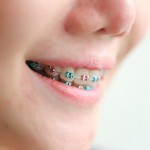
White spot lesions (WSL) are common side effects of orthodontic treatment with fixed appliances with prevalence being reported to be as high as 70%.
The aim of this review was to examine the current evidence of effectiveness for clinical methods using remineralizing agents or minimal-invasive techniques to manage post-orthodontic WSLs.
Methods
Searches were conducted in the PubMed, The Cochrane Library, Citation Trip and Clinical trials.gov databases for original studies and ongoing research.English language controlled clinical trials (randomised or non-randomised) involving more than 20 patients and with a minimum follow up period of 8 weeks were considered.
Two reviewers extracted data and assessed study quality independently. The Cochrane risk of bias and AMSTAR tools were used to assess study quality. No pooling of results was possible due to study heterogeneity.
Results
- 7 publications describing 8 clinical trials were included
- 5 involved remineralising agents, 2 resin infiltration and I microabrasion. One study involved both remineralising agents and microabrasion.
- 6 of the trials were considered to be at high risk of bias and 2 at low risk
- All WSL management strategies including ‘no treatment’ seems to result in lesion regression or visual masking of the lesions however the quality of evidence for all technologies was graded as very low.
Conclusions
The authors concluded
There is a lack of reliable evidence to support remineralising or camouflaging strategies to manage post- orthodontic WSLs. Since daily use of fluoride toothpaste cannot be withdrawn for ethical reasons, this must be considered as best clinical practice. Further well-conducted controlled clinical trials with extended long-term follow-up are needed to establish best clinical practice.
Comments
This review is an update of 2011 review of this topic by the same research group, which focuses on the post orthodontic treatment of WSLs. While all the included studies have been published since that earlier review all but 2 are considered to be at high risk of bias. In addition they are all of short duration (max 6 months) and relatively small in size with the largest including 95 patients.
The 2013 Cochrane review by Benson et al (Dental Elf – 27th Jan 2014) considered interventions to prevent WSLs during treatment. That review only included 3 studies finding moderate evidence from a single study that fluoride varnish applied every six weeks at the time of during treatment is effective. At present these reviews highlight that we currently have little reliable evidence regarding the best way of prevention and management of WSLs and that there is a need for high quality studies of appropriate size and duration to clarify the evidence.
Links
Primary paper
Sonesson M, Bergstrand F, Gizani S, Twetman S. Management of post-orthodontic white spot lesions: an updated systematic review. Eur J Orthod. 2016 Mar 30. pii: cjw023. [Epub ahead of print] Review. PubMed PMID: 27030284.
Other references

Post-orthodontic white spot lesions – lack of reliable evidence for management strategies https://t.co/QV4Zg6pF3S
Post-orthodontic white spot lesions – lack of reliable evidence for management strategies https://t.co/capuE7Lunf
Lack of reliable evidence for management strategies of post-orthodontic white spot lesions https://t.co/QV4Zg6pF3S
Lack of reliable evidence for management strategies of post-orthodontic white spot lesions https://t.co/capuE7Lunf
Post-orthodontic white spot lesions – which management strategies? https://t.co/capuE7Lunf
Post-orthodontic white spot lesions – which management strategies? https://t.co/QV4Zg6pF3S
Little evidence for management strategies of post-orthodontic white spot lesions https://t.co/QV4Zg6pF3S
Little evidence for management strategies of post-orthodontic white spot lesions https://t.co/capuE7Lunf
Don’t miss – Post-orthodontic white spot lesions – lack of reliable evidence for management strategies https://t.co/capuE7Lunf
[…] Post-orthodontic white spot lesions – lack of reliable evidence for management strategies […]
[…] Post-orthodontic white spot lesions – lack of reliable evidence for management strategies […]